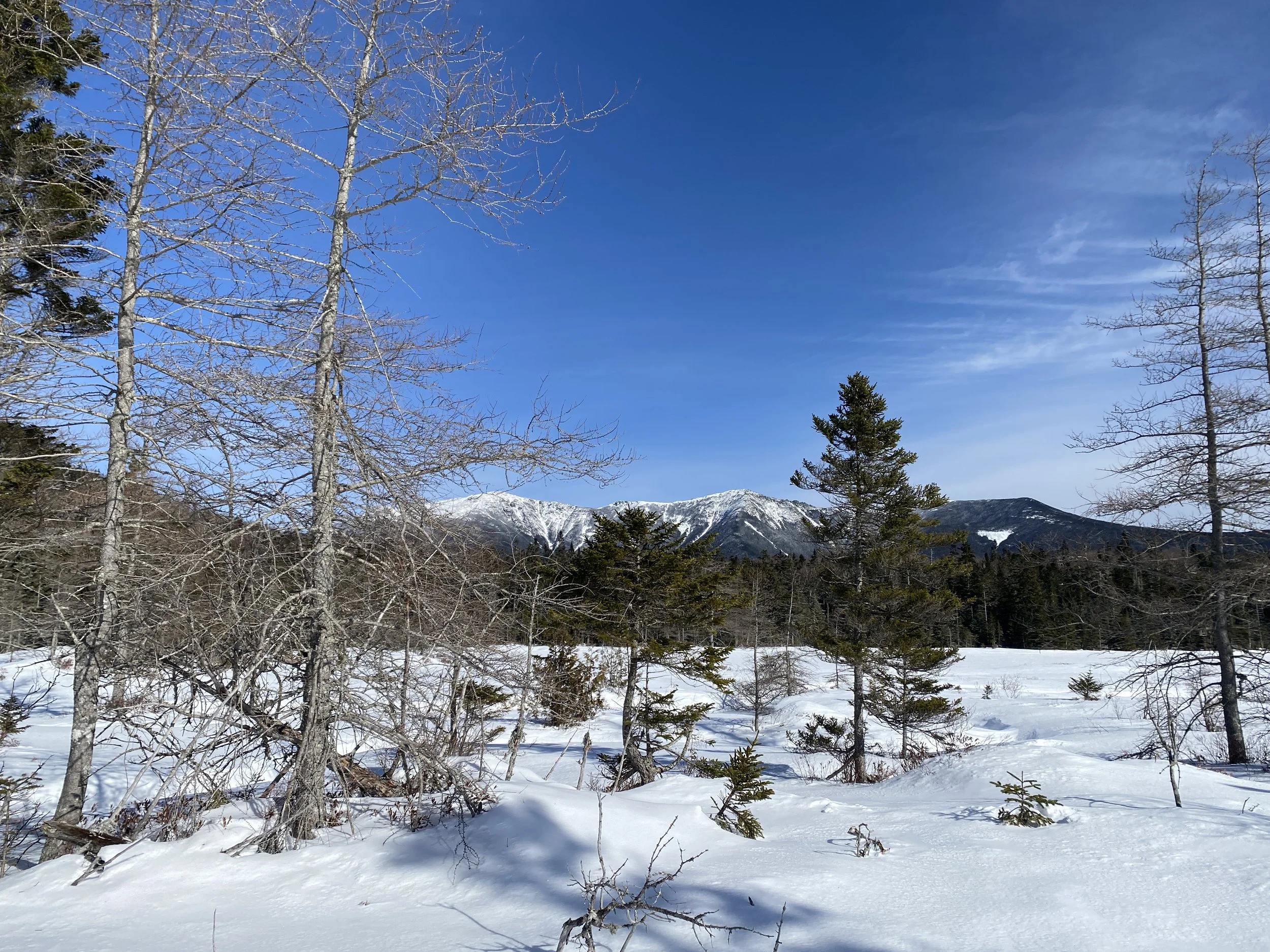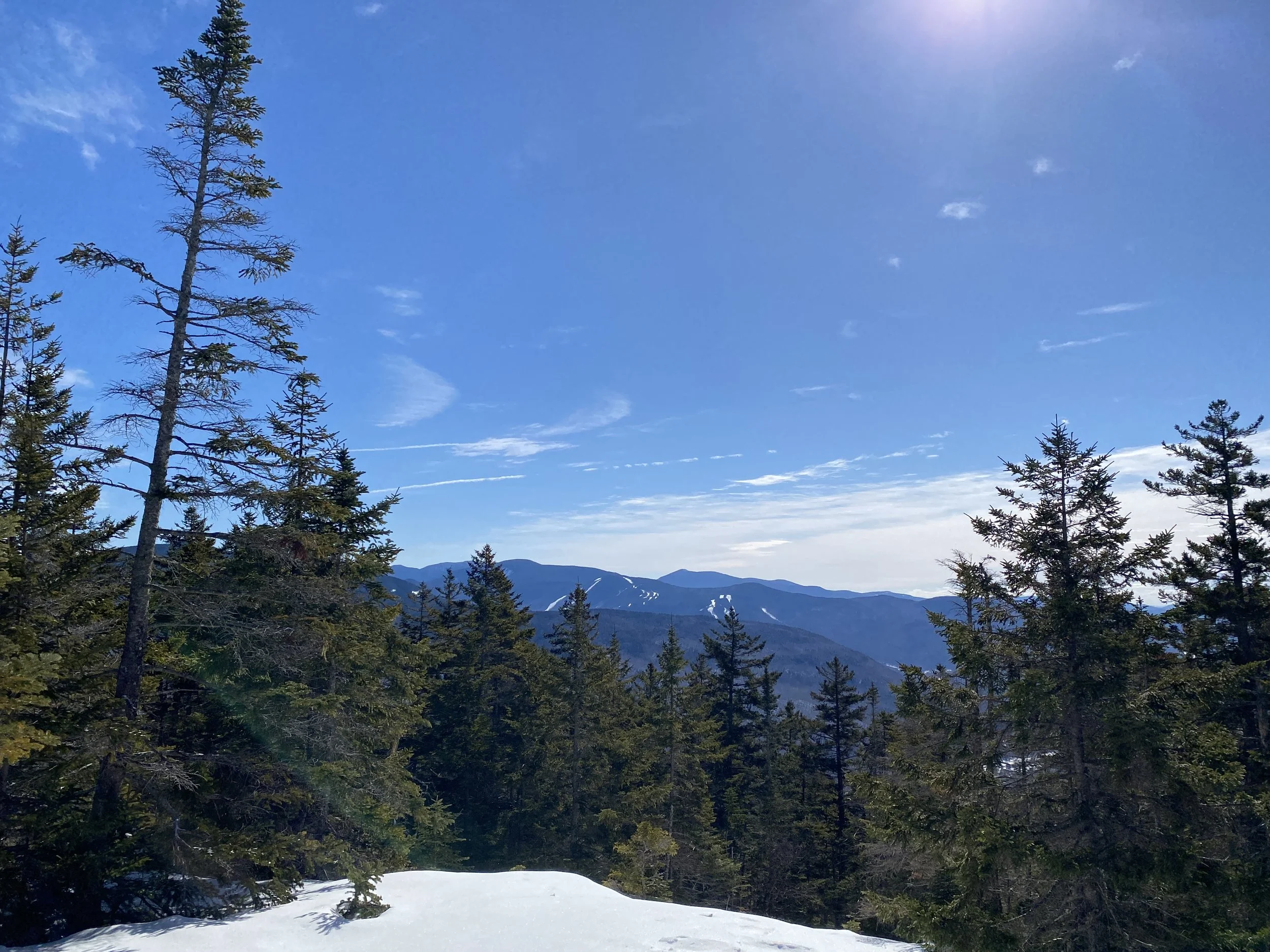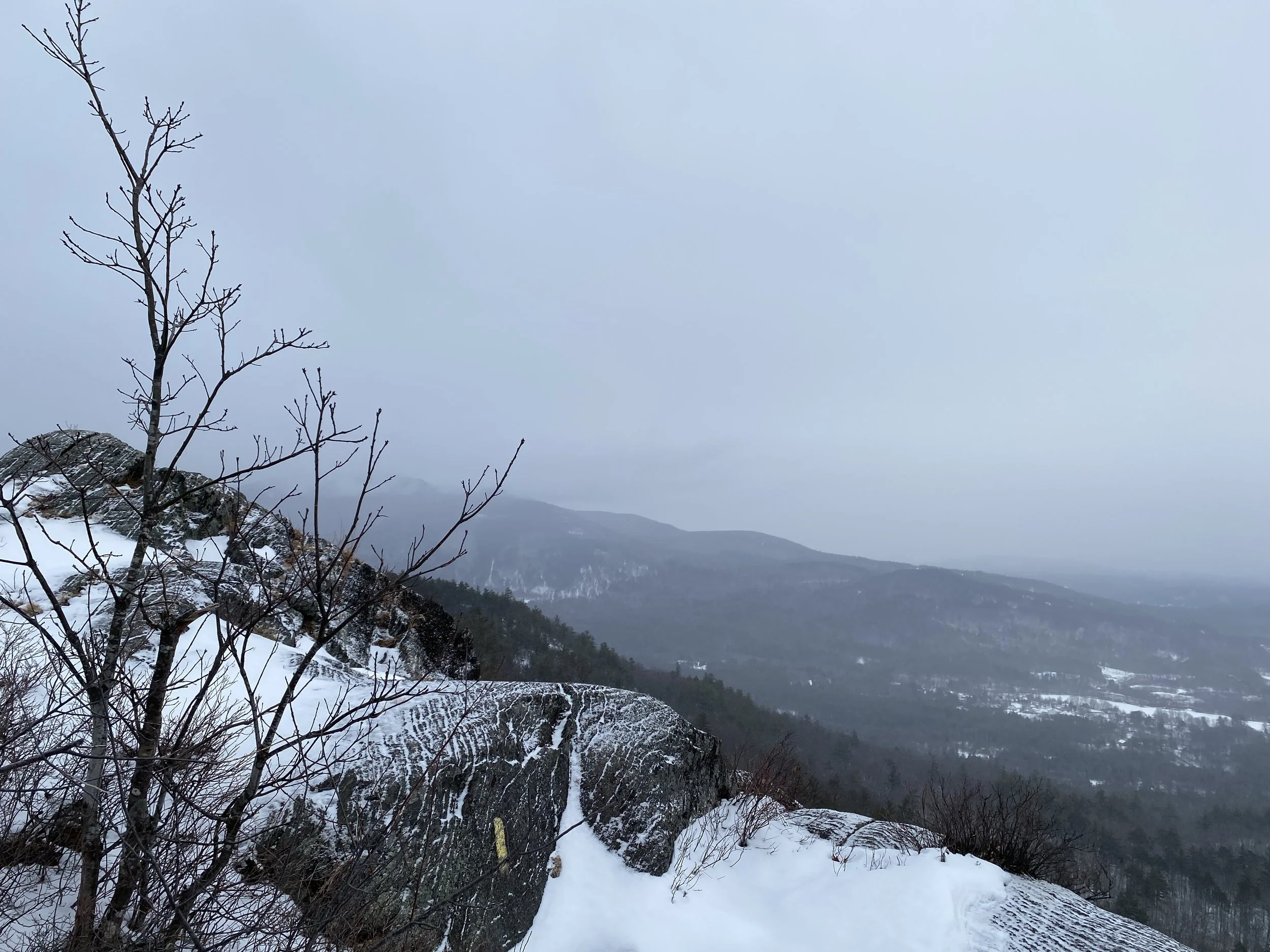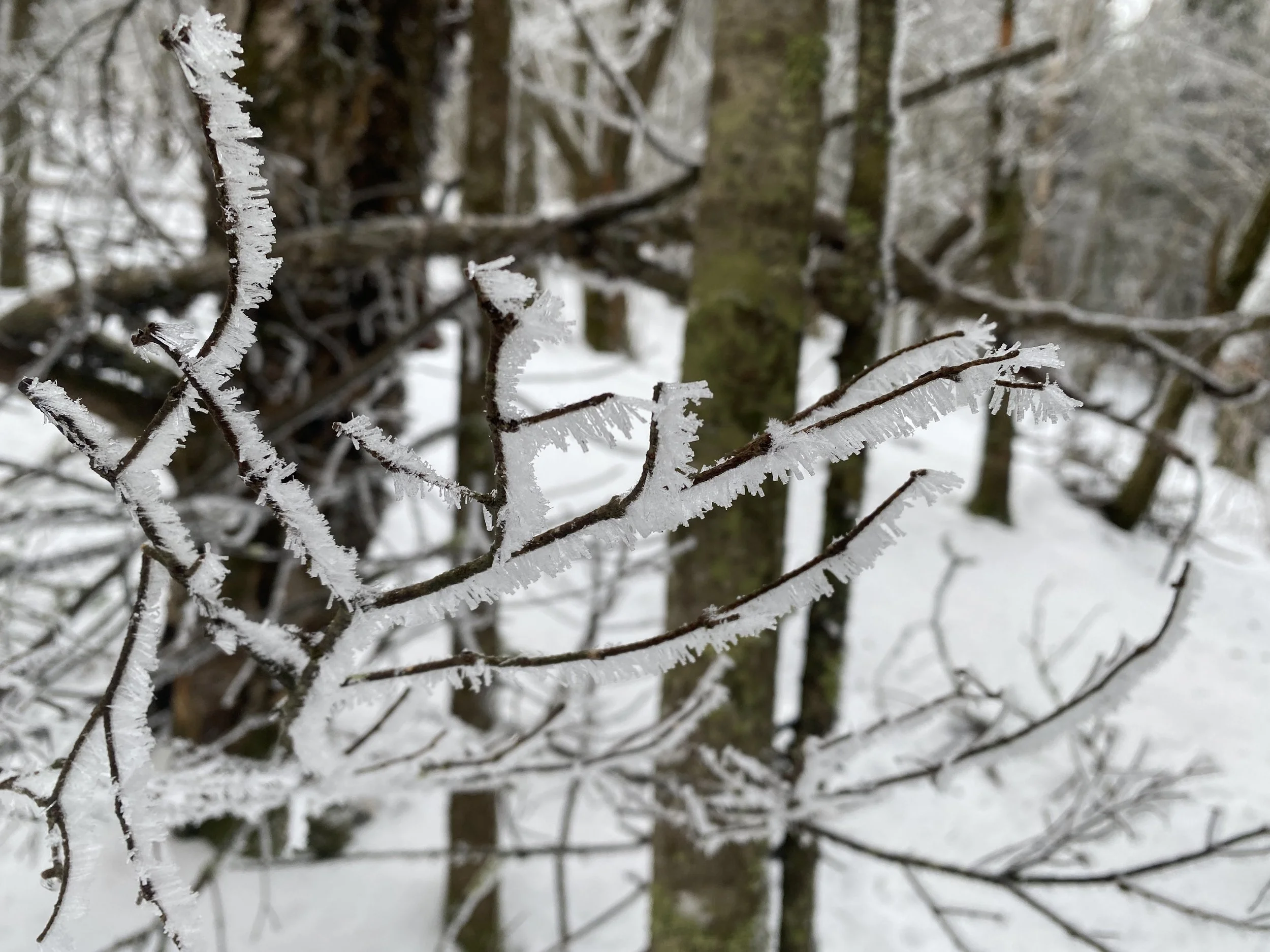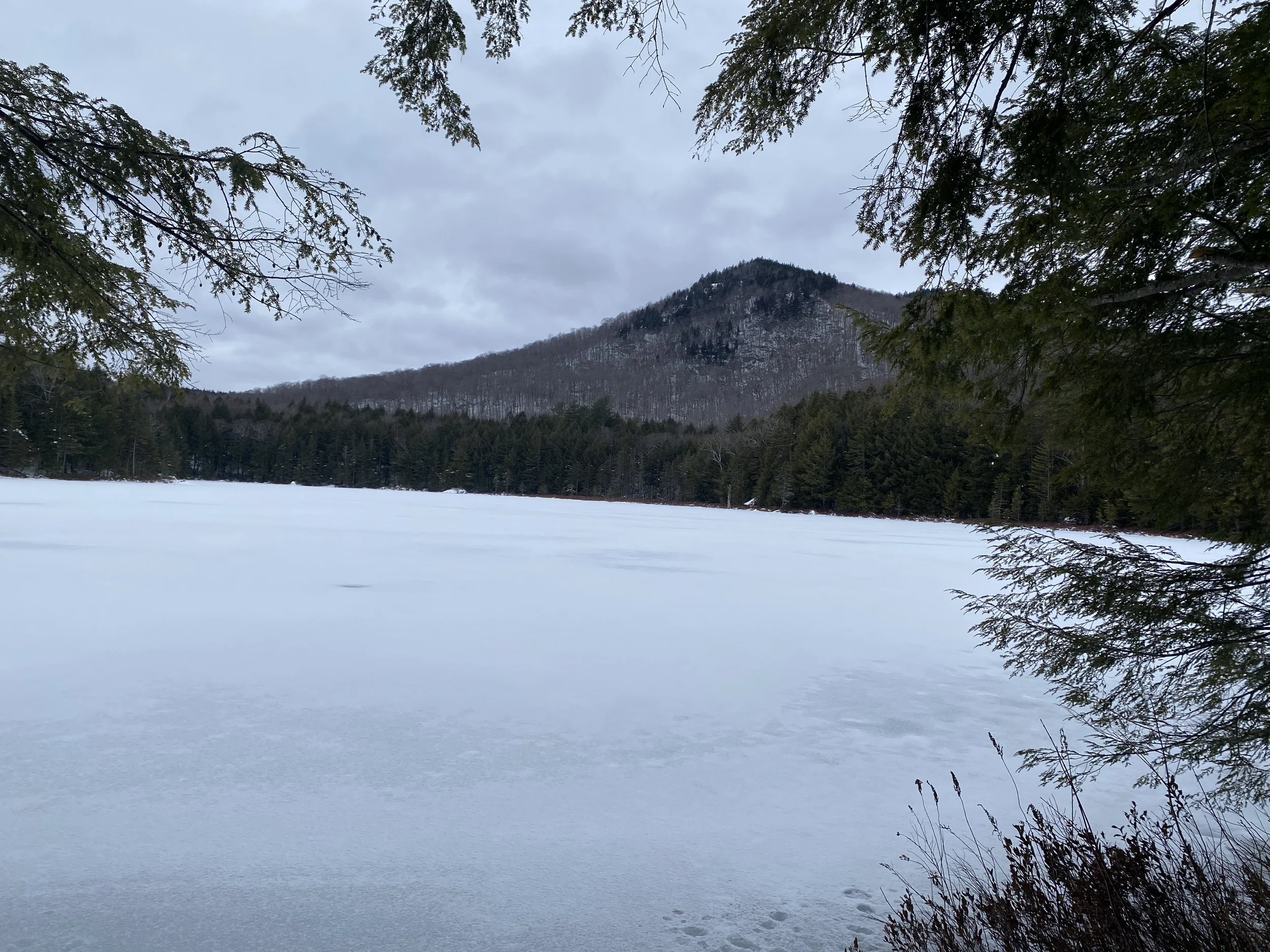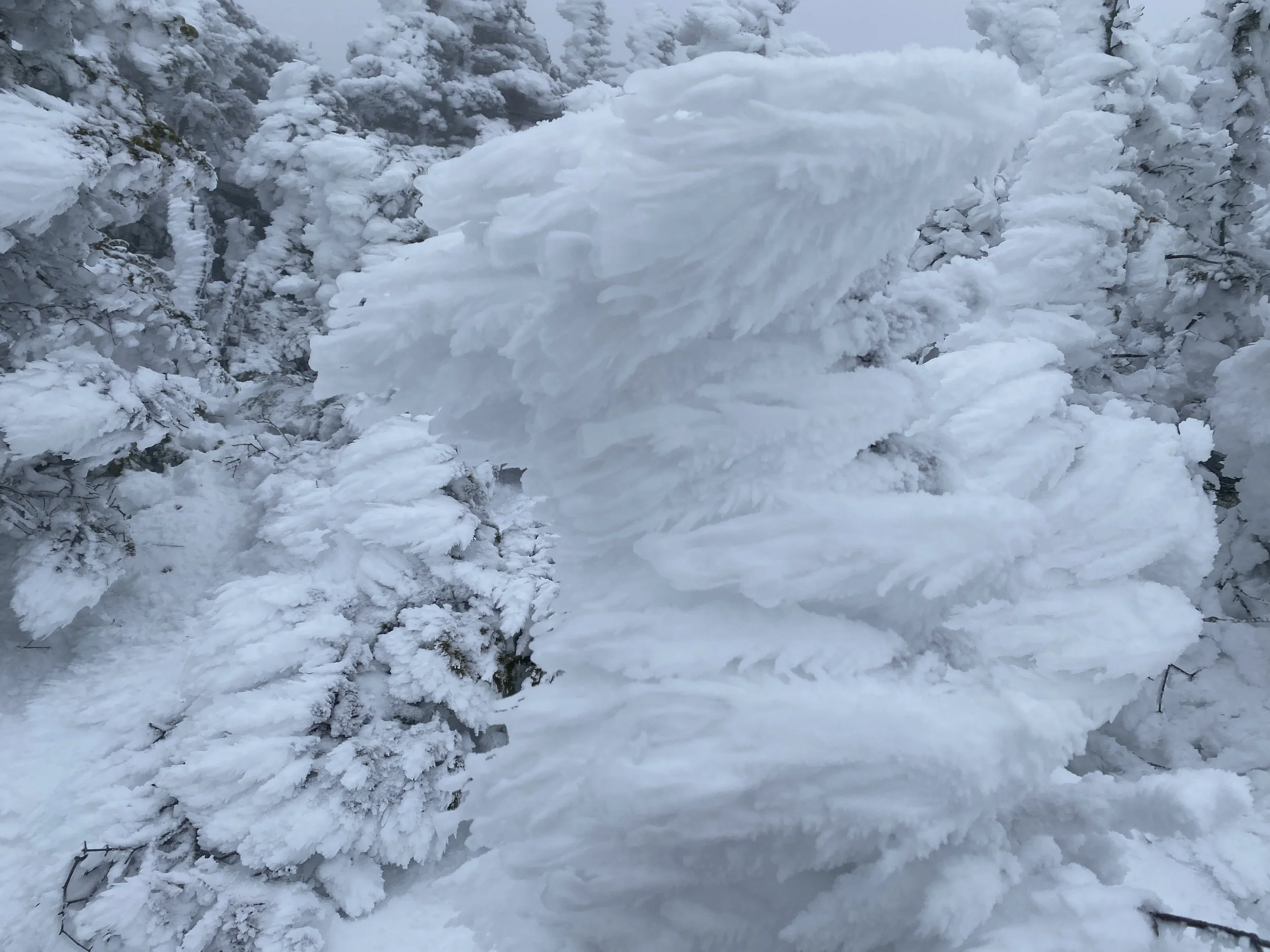The Basics: Winter Hiking in New England
Winter officially begins on December 21, 2023 and as the trails in the White Mountains of New Hampshire are currently getting pummeled with snow it only seems fitting that we start our “Hiking Basics” series with a post about winter hiking basics.
While everyone’s comfort level and experience level varies, there are some basic guidelines that can make your hike more enjoyable, and safer, if followed. This post outlines those basics.
Disclaimer - Prior to any hike you should check the route you’re intending to hike, which includes checking the map and if possible reading about the route whether online or, preferably, in the official guidebook (if applicable). You should share your plans with a trusted individual, as well as start and estimated end times. You should also carry on every hike, regardless of season, the Ten Essentials.
The following information is intended to supplement what a person would be carrying or doing to prepare for a hike in summer conditions. This post is intended to be the absolute basics that you would need to know prior to setting off on a winter hike. There is far more information that we could share but for someone who is looking to get out in the woods for the first time, this post tackles the basics.
Weather & Trail Conditions
Before you even step foot on trail there are two really important things you need to check, the weather and the trail conditions. The weather at the trailhead, or where you live, isn’t going to be the same as the weather on top of a mountain. Although our mountains are no more than 6,288’ high, the majority of houses in New England are at sea level. Which means that if you live at 200’, your temperature and weather forecast isn’t going to be the same as what it would be at the summit. Temperatures drop significantly as you go up in elevation. It’s really important to check what the weather will be at the top of the mountain (or on the trail if you’re not ascending a mountain).
Mountain Forecast and Mount Washington Observatory are the two websites we use to check weather conditions and temperatures before our hikes. We also check local weather for the town nearest where we will be hiking to see what the temperatures and conditions will be like at the trailhead.
Another important thing to consider when hiking in winter is water crossings. As winter progresses, the majority of streams will freeze and be safe to cross but not all streams are. A few years back there was an extremely wet winter and several streams were not safe to cross. They were not bridged and therefore could not be crossed. A resource to check before setting out on a hike that might have questionable water crossings is the water table on NOAA.
The second, and equally as important, thing to check before setting out is trail conditions and trail accessibility. One of our favorite resources for current trail conditions is a crowdsourced website called, New England Trail Conditions. This site is a really reliable source for all things trail. Whether or not the trail has been recently broken out, whether water crossings are doable, and what gear is recommended are just some of the things you glean off of this website prior to a hike.
TrailsNH is another great resource for trail conditions. This website is also great to check for road closures. There are a lot of trails that are not accessible in winter because the road to the trailhead is closed and gated off. Some of the most popular 4000’ers require multiple miles of road walking to get to the trailhead in winter because the roads are closed. The Forest Service also provides the status of roads on their Facebook page.
Figuring out weather, trail conditions, and accessibility to the trailhead are the first three things you want to check before setting out on a hike. Once you have that information, you will know what gear to bring and what clothes to wear for your hike.
Gear & Clothes
Starting from the feet and working our way up, the first thing you want to be sure to have on a winter hike is proper footwear and traction. In recent years, we’ve found that Kahtoola Microspikes don’t seem to be cutting it on the thick ice forming on trails and have switched to a more aggressive spike by Hillsound. Many hikers still wear the Kahtoola spikes, but for thicker ice we recommend the Hillsounds. They are equally priced.
For individuals who plan on hiking on unbroken trails it’s really important to wear snowshoes (designed for hiking, specifically). However, because this is a post geared towards the hiking basics, we will forego this piece of equipment and be comparing the two most popular snowshoe brands in a future post (MSRs and Tubbs).
Wearing boots that will keep your feet warm and dry is extremely important on a winter hike. While we prefer to wear waterproof trail runners with gaiters and thick mountaineering socks, most people who hike in winter prefer to wear a more aggressive boot with a higher ankle support. Checking with your local outfitter for the right fit and style is highly recommended. Be sure to wear or bring the socks you intend on wearing with you for a proper fit.
We prefer a knee high, mountaineer sock, along with a knee high gaiter to keep out the snow. Along with a pair of thick, lined leggings. Again, this is a personal preference as everyone warms and cools uniquely.
Layering is probably the most important thing to do to stay warm and avoid sweating in winter. The most common form of layering is a base layer, moisture wicking long sleeve shirt, followed by a mid-layer jacket, then an insulating jacket, and finally an outer layer wind breaking, waterproof shell. For your legs, wearing an insulating pair of leggings along with a wind breaking layer is common.
Protecting your fingers, ears, and head is equally as important. We lose a lot of heat through our heads so wearing a hat is a good idea, (and conversely taking it off can help you cool down fast). A liner glove can be worn under an insulating mitten for added warmth. Carrying goggles or sunglasses is recommended especially if you’re going to be above treeline. A neck warmer or balaclava is also a great thing to wear and/or carry to keep your neck and face warm and protected.
While you may not wear all of these items at the same time, it’s important to carry all of them in your pack so that you’re prepared for whatever the mountains may throw at you. Speaking of in your pack, let’s close out this post with what you should be carrying at minimum in your pack on a winter hike.
Carrying emergency gear in your pack is essential. The most pared down emergency kit should include an emergency bivy, emergency blanket, hand/feet warmers, and extra base layers and socks. Carrying enough food and water (be sure to carry water in your pack and if you put your water bottle in a cooze or wool sock it will be less likely to freeze) to last you through the night is also recommended. Ultimately, you want to head out on every hike with enough supplies to get you through the night, in winter conditions. Will you be uncomfortable and cold with just an emergency bivy, blanket, and warmers? Yes. But will you live? Hopefully.
Additionally, you can carry extra clothes, a sleeping bag, and tent if you want to be able to wait for rescue and greatly increase your chances of surviving comfortably. However, it is likely that most hikers who are heading out on a day hike aren’t going to carry that much gear.
Example of a Winter Hiking Kit
To summarize, here is a list of everything extra we carry on a day hike in winter as well as what we wear. We are not affiliated with any of these brands nor do we receive money for linking to them. We would also like to note that this is what works for us. Trial and error is what led to us hiking with these items or wearing these clothes. You don’t need the most expensive things to get started. If you enjoy winter hiking, and have the finances to do so, we recommend investing in lighter weight, higher quality gear so that you don’t have to replace it as often.
Worn Clothes
Mid Layer (Jacket no longer made)
Extra Gear Carried
Extra wool socks (any brand but we prefer Darn Tough)
Extra base layer top & bottoms (any brand but we prefer Minus33)
Wool hat
